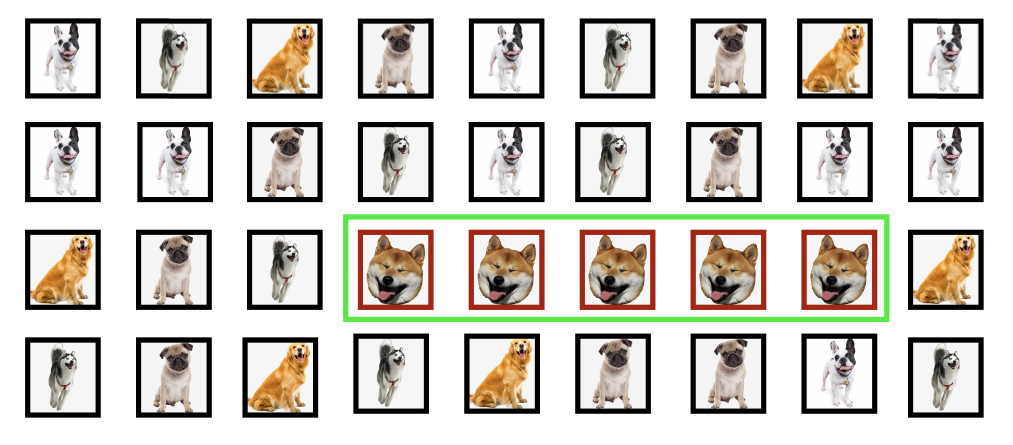- Identify the use cases for a Singly Linked List
- Demonstrate common methods for a Singly Linked List
- Differentiate between a Singly Linked List and an array
In this lesson, we'll learn what a Singly Linked List is, along with how to
build a LinkedList class. We'll also learn some of its common methods to get
an understanding of what the differences between a Singly Linked List and an
array are.
A linked list is a linear (ordered) collection of data that consists of several elements, called nodes, with each node pointing to the next node in the list. Unlike arrays, linked lists aren't indexed.
Think of it like a train: each car is connected to the next car, which is connected to the next car, and so forth. In an array, we can say "Give me the sixth element," but in a linked list, we have to start at the beginning of the train, and go from the first car, to the second car, and so forth:
The nodes in a linked list each have a value, and a pointer to another node, otherwise pointing to nil if it is at the end of the list.
Linked lists and arrays are both data structures that can hold ordered lists of data. Depending on what kind of operations you need to perform with that list, there are some scenarios where a linked list can be more efficient than an array, such as efficiently adding and removing elements from any arbitrary position within the list.
Think about if we have a sorted dog array of 5 elements representing dog breeds:
["Bulldog", "Chihuahua", "German Shepard", "Retriever", "Shiba Inu"]
[0] [1] [2] [3] [4] After creating our array, we realize we forgot to add one dog in our array, a Chow Chow! To fix our array, we would need to insert the "Chow Chow" element into the array in the correct index, which would be 2. Because there is already an element in the 2th index, and more elements in the sequential indexes, all of those elements would have to be shifted down a spot, and given a new index.
Since this is a smaller array, it doesn't seem like the biggest deal to move the last 3 elements down a place, but as you can imagine, if we had an array of hundreds or thousands or even millions of elements, reindexing all of those elements would take a really long time! This is where linked lists come in handy.
Time to build our custom data structure! Since our LinkedList class is going
to contain a series of nodes linked together, we'll start by creating Node
class:
class Node
attr_accessor :data, :next_node
def initialize(data, next_node = nil)
@data = data
@next_node = next_node
end
endEach node needs to keep track of some data, as well as a reference to the next node in the list.
Next, we can build out a LinkedList class, with an initialize method where
we declare an instance variable for the head of the linked list:
class LinkedList
attr_accessor :head
def initialize
@head = nil
end
endThe head node is going to be the very first node in our linked list, and will
point to the next node once we start adding more elements.
Let's say we want to recreate the data structure of dogs we had before
(["Bulldog", "Chihuahua", "German Shepard", "Retriever", "Shiba Inu"]). This
time we'll use a linked list instead of an array. The simplest way to do this is
to create a series of nodes and link them together using the next_node
attribute:
bulldog = Node.new("Bulldog")
# Bulldog
chihuahua = Node.new("Chihuahua")
bulldog.next_node = chihuahua
# Bulldog -> Chihuahua
german_shepard = Node.new("German Shepard")
chihuahua.next_node = german_shepard
# Bulldog -> Chihuahua -> German ShepardWhile this technically qualifies as a linked list, it's not the most pleasant to
work with! We can make our data structure a bit more developer-friendly by using
the LinkedList class to build a list by creating an append method in our
LinkedList class.
The append method should add a node to the head of the list if the list is
empty, and add it to the end of the list if not:
class LinkedList
attr_accessor :head
def initialize
@head = nil
end
def append(node)
# Add element to the beginning of the list if the list is empty
if head.nil?
self.head = node
return
end
# Otherwise, traverse the list to find the last node
last_node = head
while last_node.next_node
last_node = last_node.next_node
end
# and add the node to the end
last_node.next_node = node
end
endNow we can build our linked list like so:
list = LinkedList.new
list.append(Node.new("Bulldog"))
# Bulldog
list.append(Node.new("Chihuahua"))
# Bulldog -> Chihuahua
list.append(Node.new("German Shepard"))
# Bulldog -> Chihuahua -> German ShepardLinked Lists are ideal for situations when you need quick insertion and
deletion, but are more expensive than arrays when it comes to searching, since
arrays are indexed. The Big O for both insertion as well as deletion at a known
node in a linked list is 0(1) because we don't need to update indexes for the
other elements in the list when a new element is added: we just need to adjust
which node the next_node points to. With an array, insertion and deletion from
anywhere other than the end are O(n), because other elements need to be
reindexed.
We use linked lists because they can be less expensive than arrays when it comes
to insertion and deletion within lists. Linked Lists are a very common interview
data structure, so make sure you get to know them! In the next lesson, we'll
build more methods in our LinkedList class.


